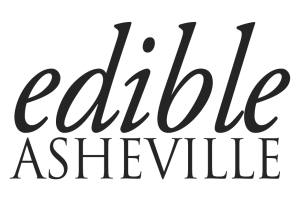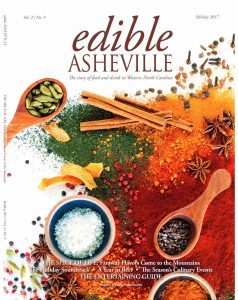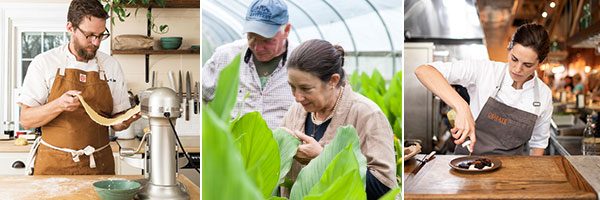Presented by the John C. Campbell Folk School
HOMEMADE SUDS
A primer on making soap at home with Allison Haigler, an instructor at the John C. Campbell Folk School
***
To put together the following primer, we consulted with Allison Haigler, an instructor on soap-making at the John C. Campbell Folk School. The art of making homemade soap is one of many courses taught at the Folk School, located in Brasstown, about two hours southwest of Asheville.
Opening its doors in 1925, the Folk School offers hundreds of week-long or weekend classes in subjects ranging from baking and painting to wood-carving and jewelry design. Its mission is to preserve the folk arts of the Appalachian Mountains and, with a beautiful campus in the mountains, it does it in style.
Please note that this primer is not meant to be a comprehensive set of instructions for making soap; it is merely an introduction. The process of making soap involves lye, which is a caustic substance that can be harmful to skin, eyes and, if too much is inhaled, lungs. Haigler says she recommends a formal class to both novices and experienced soap-makers to understand the necessary safety measures as well as the creative techniques.
A RICH TRADITION
Humans have used soap for thousands of years, and there’s evidence to suggest that a form of soap was being made in ancient Babylon as far back as 2800 B.C. While its ubiquity in modern-day America makes it easy to overlook its power and value, soap transformed human existence by providing a way to remove dirt and bacteria from human skin and making it easier to avoid sickness and disease.
Soap is made when lye is mixed with oils, fats and butters. This prompts a chemical reaction called “saponification,” which deactivates the harmful properties of lye and results in the creation of soap. “This is why soap-making is more like baking than cooking,” Haigler says, noting the importance of precise weights and volumes. But once this process is done, soap makers—or “soapers,” as they’re known—can exercise their creative skills with the addition of scents, colors, and unique designs.
Haigler learned how to make soap nearly 15 years ago, while attending a course of primitive skills just outside of Seattle. Ever since then, she has been making soap for herself and her family, while also teaching the skill to others.
One of her favorite soaps to make is a blend she calls “dirty hippy.” Scented with the essential oils of patchouli, geranium and ylang-ylang, it gets a rich brown color from a mix of allspice, coffee and poppy seeds. Another favorite is “forest perfume,” which is scented with woodsy essential oils, like cedarwood, juniper berry, fir, pine and spruce. “It’s a lot of fun and you can do so much with it,” Haigler says. “It’s really easy to customize your own batch.”
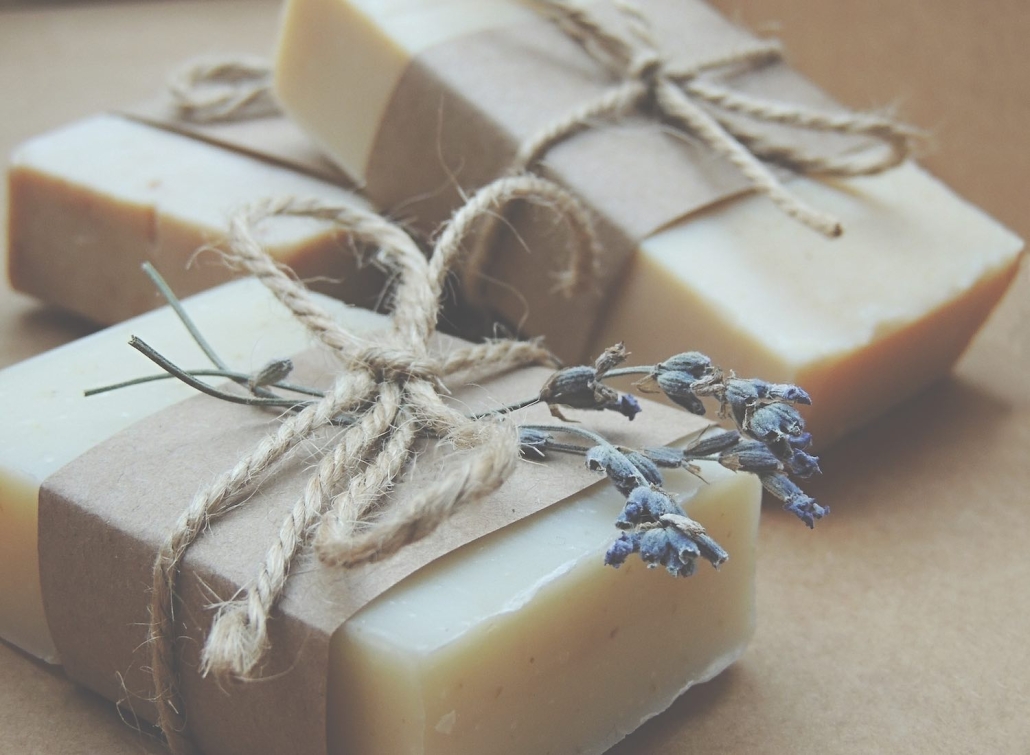
THE BASICS
Makes 6 bars of soap
6 ounces cold distilled water
3 ounces lye (6% superfat)
6 ounces palm oil
6 ounces coconut oil
9 ounces pomace olive oil
3-4 teaspoons essential oil
3-4 teaspoons natural colorant
Step 1: Cover table or counter with plastic tablecloth, and set up all of your materials.
Step 2: Weigh out the appropriate amount of water using a digital scale and pour into a non-reactive/dense plastic container, such as a plastic pitcher.
Step 3: Put on gloves and goggles. Weigh out the appropriate amount of lye and then add the lye to the water, stirring so that all lye crystals dissolve. (*Important note: You should never add water to lye; only add lye to the water. “It should be like snow falling on a lake,” Haigler says). This process will create fumes that can irritate your eyes and lungs so do this in a well-ventilated area. Once the lye is added to the water, it will heat up quickly. So place it in a cold-water bath and place it outside and let it cool to 90°to 110°.
Step 4: Weigh out the appropriate amount of oils. Put them in a soap pot on low heat until it reaches 90° and remove from the heat.
Step 5: When the temperatures of both the lye water and the oils reach about 90°, slowly blend them together. The oils should be in a stainless steel pot or bowl, and add the lye water to this. Using an immersion blender, pulse in three to five second intervals for up to 30 seconds until the mixture begins “to trace.” “As long as it doesn’t look oily, it’s probably pretty well mixed,” Haigler says.
Step 6: Add your essential oils to the mixture. Essential oils are often measured in volumes, as opposed to weights like the oils and lye.
Step 7: Add your colorants, using a portion of water to make a slurry with the colorants and then add to the full mixture.
Step 8: Pour your soap into molds. Close or cover your molds and allow them to sit undisturbed in a warm place for 24-48 hours. This can be in a closet or on top of a refrigerator.
Step 9: When the soap is as firm as a block of soft cheddar, remove it from the molds and place it on a countertop, a block of wood or a cutting board. Cut and trim the soap, making sure to wear gloves as the soap is still caustic. Space out the blocks of soap or stack them in a pyramid and let them cure for 4-6 weeks in a place away from sunlight. The longer you let it cure, the longer it will last in the shower. After that, enjoy! For longer term storage, place in an air-tight container.
SUPPLIES
Stainless steel soap pot
Glass or plastic container for lye
Kitchen thermometer
Digital scale
Long-handled silicone spatula
Stainless-steel immersion blender
Ladle
Glass or plastic measure
Soap molds (wood, silicone or milk cartons)
Pastry cutter or knife
Apron
Safety glasses
Rubber gloves
CARE WITH LYE
Lye is used in traditional soap-making, but it has to be handled with care. It is a highly alkaline chemical solution and can cause burns to skin and eyes, and also to lungs when inhaled. For that reason, the soap-making process requires the use of gloves and safety goggles, long sleeves and pants, and closed-toe shoes. The soap-making process completely deactivates the harmful properties of lye, creating a totally safe bar of soap, but the process itself must be approached with caution.
RECOMMENDED BOOKS
The Natural Soap Book: Making Herbal and Vegetable-Based Soaps by Susan Miller Cavitch
The Soapmaker’s Companion: A Comprehensive Guide with Recipes, Techniques & Know-How by Susan Miller Cavitch
Pure Soapmaking: How to Create Nourishing, Natural Skin Care Soaps by Anne-Marie Faiola
Save
Save
Save
Save
Save
Save
Save
Save
Save
Save
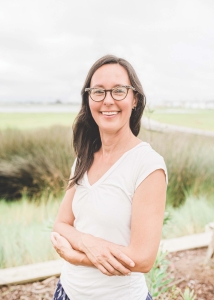
Allison Haigler, one of the instructors at the John C. Campbell Folk School who teach soap making.
THE WEEKLY REVEL
Sign up for your free handpicked guide to enjoying life around Asheville.
Available weekly from May to October.

